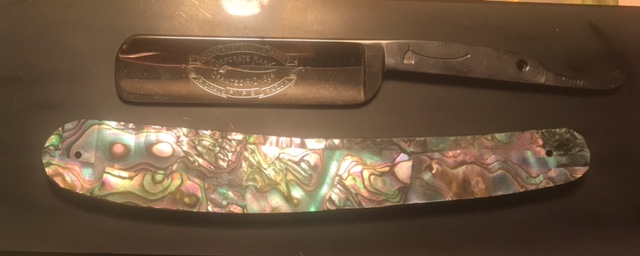Okay, so I've been working on this project in my spare time
http://straightrazorpalace.com/works...n-abalone.html.(See posts #9 and 11).

I plan to put this beautiful Wostenholm Pipe I've been working on in the scales.
At any rate, I got the black acrylic scales shaped and edge-smoothed the way I wanted (think files, followed by wet grinding belts from 400 to 2k to keep the acrylic from melting). I got the abalone veneer cut and adhered to the scale faces without incident (though it is
extremely fragile and brittle!). I even managed to smooth and match the veneers to the scale profiles with those same wet belts (whew-wasn't sure that would work!). But because the stuff is so brittle, I decided to forgo the edge beveling this time, as I'm already doing several new techniques here, and I
really don't want to screw this up!
I just ordered some FlexCoat rod-builder's epoxy per Mike/Outback's advice. I learned how to set up the scales on ds-taped flat dowels, pour it on, and so forth from our library and other sites. So I have two questions as a 1st-time epoxy user (at least for this application):
1. As I'm worried about sanding dried epoxy off the backs of acrylic scales (worried about melting the insides of the scales), would it be a crazy idea to put a thin coat of some sort of oil on the back flats to keep the epoxy from adhering at all? Would it then drip off? Is this just a totally stupid idea?
2. Can I plug my pin holes with wax or something, then drill back through the cured epoxy? I wanted to pre-drill my holes while I still had masking tape on the abalone, and both sides perfectly flat.
Any advice is appreciated! SHD/Aaron
edit: Oh, and not sure what would make a nice wedge for this? White acrylic? Something light blue or in the teal family? (I guess that's 3 questions lol!).